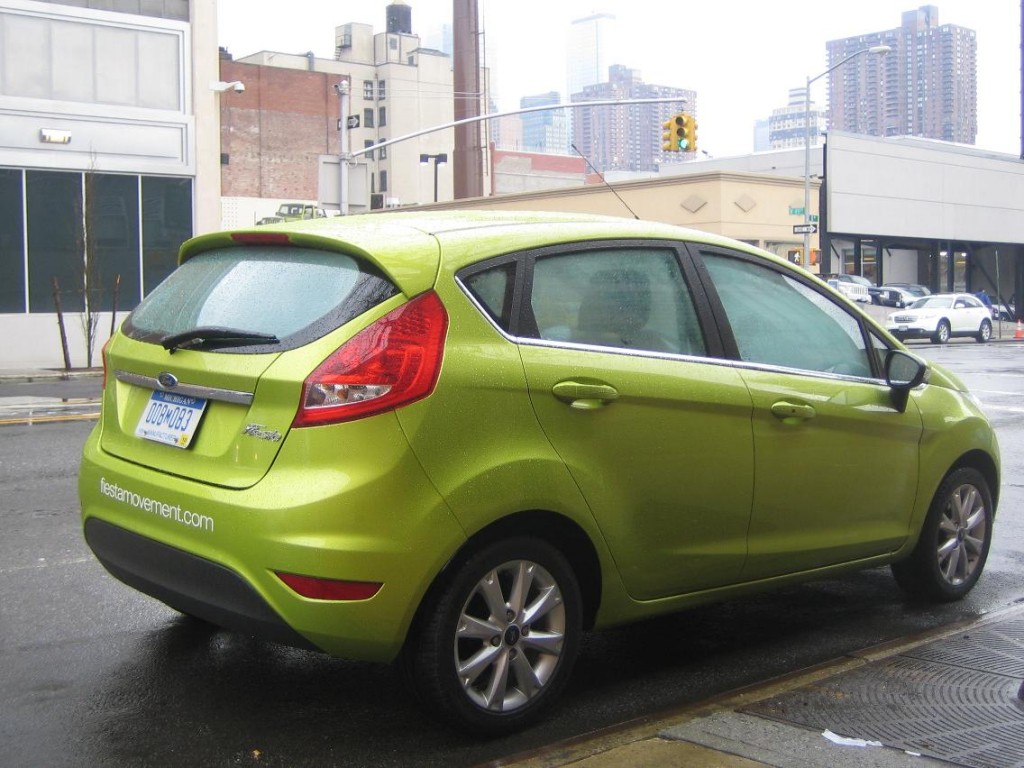
2011 Ford Fiesta
So why am I bringing this up in what could be considered late in the game? Yesterday, the Motor Trend Blog released a story that details the problems with the Fiesta as seen from a European perspective. I know what you are thinking and you aren’t wrong; the Fiesta has been selling like gangbusters in Europe and has been given very high regard among reviewers. However, the Motor Trend article isn’t concerned with their market, they are concerned with how the car will sell when brought across the pond next year. The question at hand—Can you have a globally designed car in the small car segment that will be a major seller in the U.S. as well as Europe?
Paul Horrel writes, “In the States, for most non-enthusiast buyers (which means, sadly, most buyers), the reason to buy a small car is fuel economy.” Now, I don’t necessarily disagree with this, unless we are talking about a car like the MINI Cooper. However, I do agree that European customers are more accustom to driving small cars due to their environmental constraints (small roads, garages, etc…) Horrel’s editorial doesn’t just focus on the consumer differences between Europe and the U.S., it also focuses on the market volume differences. Horrel comments that he doesn’t “share Ford's optimism on U.S. sales of the Fiesta” and given that the Ford Fiesta exists in Europe’s two highest volume vehicle segments and still “such cars are hard for European makers to turn a profit on.” Now if you look at the U.S. market that is typically lower volume in the small cars segment, Horrel believes they won’t have the economy of scale and profit will be even scarcer.
Back to the original question at hand, will these issues make the Fiesta a one car American party or the next Ford flop? My perspective is this, the Japanese car companies over the years have been making their cars larger over the years…just look at a Honda Civic or Toyota Camry from the ‘80s until now. However, most foreign maker also offers an economy car—Toyota Yaris, Honda Fit, Kia Rio, Kia Soul, Hyundai Accent, Nissan Versa, etc… Then you have your premium or niche small cars in the U.S. like the MINI Cooper where image, heritage and performance drive the sale of the car, especially when you consider it is priced well above something like a Yaris or Fit. Ford has done an excellent job of keeping the Fiesta in the media and the positive reviews just keep coming in. This paired with the exclusive Sync system and better styling then the last generation Focus hatchback I think will lead to success for Ford.
Bottom line—the success of the 2011 Ford Fiesta in the U.S. won’t be driven by global consumer differences, it will be driven by entry level price, perception of quality and value for said money. The MINI Cooper has proven American’s will by tiny cars by the droves (hence it being rate as one of the best cars to hold its resale value), so being a “small car” might not be as big a problem as one might think. Also keep this in mind:
The 2011 Ford Fiesta will be the best American small car on the market, unless anyone thinks a Chevrolet Cobalt or Aveo can really out shine it. Taking a lesson from the Chrysler campaigns in the ‘80s, don’t underestimate American consumer’s loyalty to homegrown car companies.












